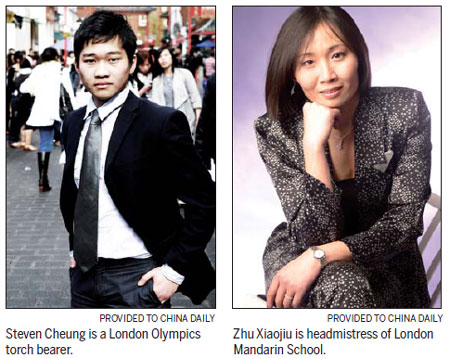Changing Chinatowns
Updated: 2012-11-16 11:10
By Cecily Liu (China Daily)
|
|||||||||||
New looks
|
Alan Seatwo, chief coordinator at Liverpool Chinese Business Association, says the LCBA gives Chinatown and the Chinese community a voice to be heard. Zhang Bin / China Daily |

The growing diversity and living standards of overseas Chinese community is also reflected in the physical appearance of Chinatowns. Once dominated by Cantonese restaurants and their Westernized counterparts, Chinatowns in Europe are now home to a growing number of eateries that serve food from all over China.
In the heart of London's busy West End is a Chinatown flooded with local residents and tourists. From the all-you-can-eat buffets, to delicate selection of specialist regional Chinese cuisines, London's Chinatown is never short of choices.
For those new to London, it is perhaps difficult to imagine that most of these changes have taken place over a period of five years, says Tom Welton, director of Shaftesbury PLC, the property investment group that owns most of the land on which the Chinatown stands.
"Nowadays many Westerners travel to China and experience more authentic flavors. When they come back to the UK, they often take their friends to these restaurants to partake these dishes. I think that's partly why Chinatown's food has become much more diverse now, as there are limits to the amount of crispy duck and sweet and sour pork that one can eat," Welton says.
In addition to the Chinese cuisine, Welton says he has also seen Malaysian, Korean, Japanese and Vietnamese restaurants in Chinatown, something totally alien in an atmosphere dominated by Cantonese food.
"Back then, most of the restaurants offered similar dishes and the game plan was all about boosting number with lower cost." But these price war also led to a deterioration in food quality and overall image. "Finally it did come down to a stage, rather unfairly, when some Londoners would say: 'Don't go to Chinatown. It's just for tourists and you don't get anything good'," he says.
But the steady influx of wealthy Chinese tourists and international students have changed all that. There has been an increasing demand for quality food in Chinatown in recent years. According to Welton, the trend has also coincided with the growing demand for international cuisine in the UK.
|
||||
London's Chinatown initially took shape on a site that was ravaged by the Blitz during World War II.
"The Chinese community moved in to this site and since then there have been no redevelopments. That also explains why the Chinatown in London is at such a prime location."
To help Chinatown gain a distinctive identity, Shaftesbury PLC sponsored a few pieces of artwork in the area. "Despite Chinatown being in the center of the city, it's quite hard for people to find it. Having these art works just helps to tell people where Chinatown is," he says.
"We expect the London's Chinatown to stay authentic and be a place for people to come and experience different types of food. We want the area to prosper," he says.
Today's Top News
Rescuers race against time for quake victims
Telecom workers restore links
Coal mine blast kills 18 in Jilin
Intl scholarship puts China on the map
More bird flu patients discharged
Gold loses sheen, but still a safe bet
US 'turns blind eye to human rights'
Telecom workers restore links
Hot Topics
Lunar probe , China growth forecasts, Emission rules get tougher, China seen through 'colored lens', International board,
Editor's Picks

|

|

|

|

|

|









